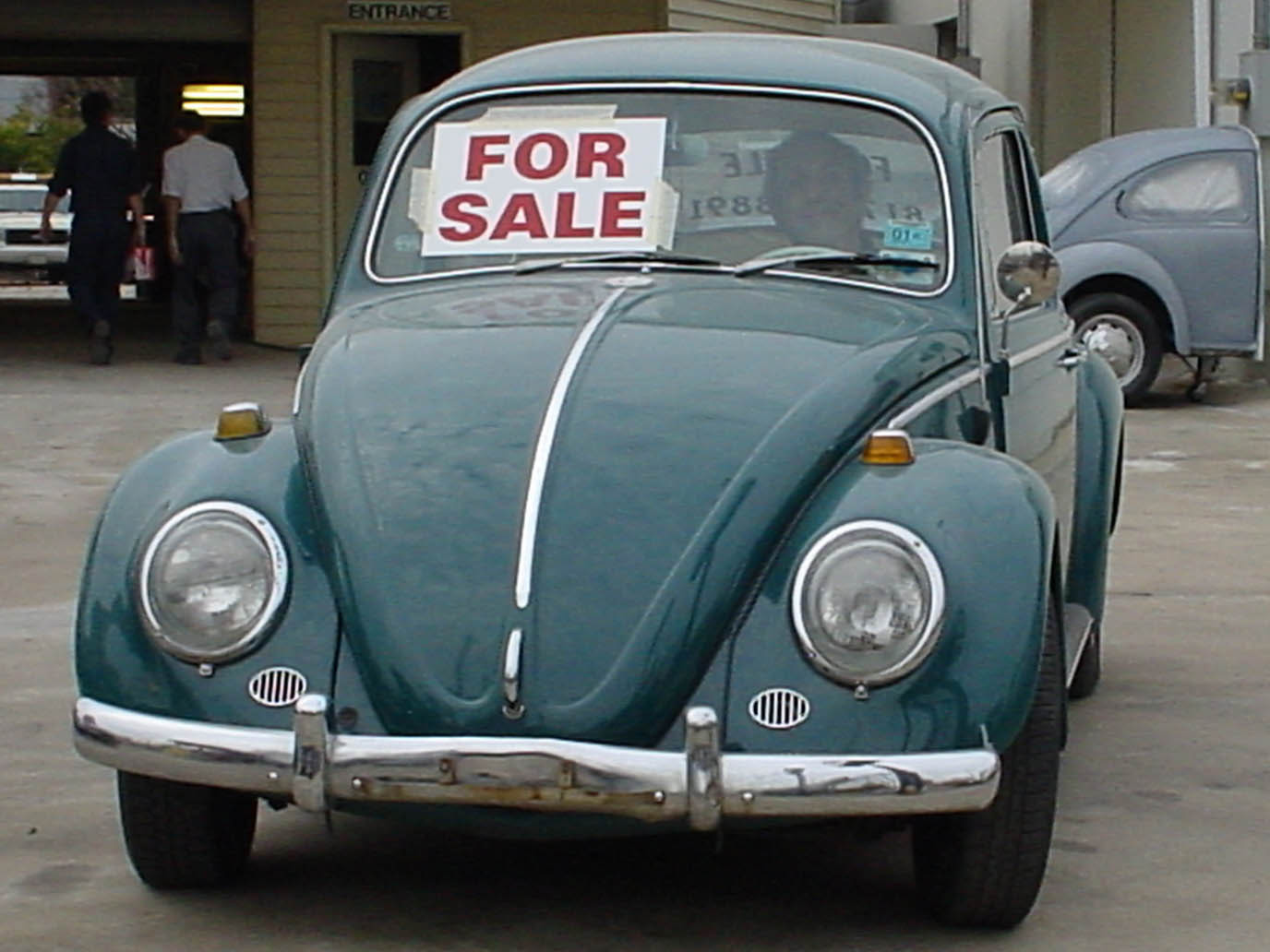Used Trucks For Sale Under $5,000: Your Comprehensive Guide to Affordable Utility pickup.truckstrend.com
In an era where vehicle prices seem to constantly climb, the idea of finding a reliable and functional truck for under $5,000 might seem like a pipe dream. However, for many individuals, small businesses, and DIY enthusiasts, this budget range represents a crucial entry point into the world of pickup trucks. A used truck for under $5,000 isn’t about luxury or cutting-edge technology; it’s about pure utility, affordability, and the potential for a workhorse that serves a specific purpose without breaking the bank.
This comprehensive guide will navigate the exciting yet challenging landscape of the sub-$5,000 truck market. We’ll explore what you can realistically expect, where to find these budget-friendly beasts, how to thoroughly inspect them, and what crucial considerations will ensure you drive away with a valuable asset rather than a money pit. Whether you need a truck for hauling yard waste, carrying tools, a weekend project vehicle, or simply a reliable second vehicle, the sub-$5,000 market holds surprising opportunities if you know where and how to look.
Used Trucks For Sale Under $5,000: Your Comprehensive Guide to Affordable Utility
The Allure of the Sub-$5,000 Truck: Why This Budget Matters
The appeal of a truck priced under $5,000 is multifaceted. For many, it’s the ultimate solution to a specific need without the burden of a hefty loan or significant depreciation. This price point often attracts:
- First-time Truck Owners: Those new to the truck world who need a practical vehicle but aren’t ready for a large investment.
- Budget-Conscious Buyers: Individuals or families needing a utility vehicle for hauling, towing, or work without impacting their primary budget.
- DIY Enthusiasts and Tradespeople: Perfect for carrying tools, materials, and equipment for home projects or light commercial work.
- Project Vehicle Seekers: Enthusiasts looking for a platform to customize, restore, or modify without the initial high cost.
- Emergency or Backup Vehicles: A dependable second vehicle for unexpected needs or specific tasks.

The primary benefit is, undeniably, the cost savings. Beyond the purchase price, lower insurance premiums, reduced registration fees (in some states), and less financial stress often accompany these older, more basic models. Furthermore, many trucks in this range are simpler in design, making them potentially easier and cheaper to maintain or repair for the mechanically inclined.
What to Expect (and Not Expect) in This Price Range
Setting realistic expectations is paramount when shopping for a truck under $5,000. You are generally looking at:
- High Mileage: Most trucks in this category will have well over 150,000 miles, and often significantly more (200,000+). This isn’t necessarily a deal-breaker if maintained well.
- Cosmetic Imperfections: Dings, dents, scratches, faded paint, minor rust on body panels, and worn interiors are common. These are often superficial and don’t affect functionality.
- Older Technology: Expect basic features. Power windows, cruise control, and advanced infotainment systems are rare. Air conditioning may or may not work.
- Potential for Minor Mechanical Issues: While you hope for a turn-key vehicle, be prepared for potential maintenance needs like worn suspension components, minor fluid leaks, or an aging exhaust system.
- Limited Availability of Specific Models/Configurations: Finding a very specific year, trim, or engine configuration might be challenging, so flexibility is key.


What not to expect: A showroom-quality, low-mileage, fully loaded truck. If that’s your expectation, this budget will lead to disappointment. Instead, focus on mechanical soundness, frame integrity, and a vehicle that fulfills its core utility purpose.
Finding Your Diamond in the Rough: Where to Look
The hunt for a sub-$5,000 truck requires diligence and knowing where to focus your search.
-
Online Marketplaces:
- Facebook Marketplace: Excellent for local private sellers. Filter by price, location, and vehicle type. Be ready for quick responses and negotiation.
- Craigslist: Still a strong contender for private sales. Use specific keywords (e.g., "Ford F-150," "Chevy Silverado," "pickup truck") and filter by price.
- eBay Motors: While many vehicles are higher priced, some older, less common, or project trucks can be found via auction or "Buy It Now" options.
- Dedicated Used Car Websites (e.g., Autotrader, Cars.com): While their primary focus is higher-priced vehicles, you can still set a maximum price filter. Look for "older models" or "bargain vehicles" sections.
-
Local Classifieds and Community Boards: Don’t underestimate the power of local newspapers, community notice boards, or even word-of-mouth. Sometimes, the best deals are found offline.
-
Small, Independent Used Car Lots: These often deal in older, higher-mileage vehicles that major dealerships won’t touch. While they offer less room for negotiation than private sellers, they might offer some limited warranty or reconditioning.
-
Auctions: Public auto auctions (often from police impounds, repossessions, or government fleets) can offer incredibly low prices, but they come with significant risk as you typically cannot test drive or thoroughly inspect vehicles. This option is best for experienced buyers or mechanics.
When searching, be flexible with your criteria. Sometimes, a truck that doesn’t immediately catch your eye might be mechanically sound and just needs some TLC.
The Critical Inspection: What to Check Before You Buy
This is the most crucial step. A thorough inspection can save you thousands in future repairs. If you are not mechanically inclined, always arrange for a Pre-Purchase Inspection (PPI) by a trusted independent mechanic.
-
Exterior and Frame:
- Rust: This is the #1 enemy of older trucks. Check the frame rails (especially near the cab and rear axle), bed supports, brake lines, fuel lines, and suspension mounting points. Surface rust is common; structural rust is a deal-breaker.
- Body Panels: Look for large dents, mismatched paint (signs of accidents), and rust around wheel wells, rocker panels, and cab corners.
- Tires: Check tread depth and uneven wear (indicating alignment issues or suspension problems).
- Lights: Ensure all headlights, taillights, brake lights, and turn signals work.
-
Interior:
- Odors: Musty smells could indicate water leaks or mold.
- Dashboard & Electronics: Check for warning lights (Check Engine, ABS, Airbag). Test all switches, radio, heater, AC (if applicable), and power windows/locks.
- Seats & Upholstery: Wear and tear are expected, but look for excessive damage or water stains.
-
Under the Hood (Engine Off):
- Fluid Levels & Condition: Check oil (shouldn’t be milky or excessively dark), coolant (no oil in it), transmission fluid (red, not burnt-smelling), brake fluid.
- Leaks: Look for drips or stains on the ground or engine components.
- Belts & Hoses: Check for cracks, fraying, or bulging.
- Battery: Look for corrosion on terminals.
- General Cleanliness: A very clean engine bay could hide leaks; a very dirty one might indicate neglect.
-
The Test Drive (Engine On):
- Cold Start: Listen for excessive smoke (blue/white/black), knocking, or tapping noises.
- Transmission: Shifts should be smooth, without clunking or slipping. Test all gears, including reverse.
- Brakes: Should be firm, not spongy, and stop the truck without pulling to one side or grinding.
- Steering: Should be responsive with minimal play. Listen for power steering pump noise.
- Suspension: Drive over bumps and listen for clunks, squeaks, or excessive bouncing.
- Acceleration: The truck should accelerate smoothly without hesitation or loss of power.
- Warning Lights: Pay close attention to any lights that illuminate during the drive.
-
Paperwork:
- Ensure the seller has a clear title in their name. Never buy a vehicle without a title.
- Service Records: Ask for any maintenance history. This provides invaluable insight into how the truck was cared for.
Common Models to Consider Under $5,000
While condition trumps model year, some trucks are generally more robust and have better parts availability, making them good candidates in this price range. Focus on models from the late 1990s to early 2000s.
| Model / Generation (Approx. Year Range) | Pros | Cons | Key Considerations |
|---|---|---|---|
| Ford F-150 (9th/10th Gen: 1992-2003) | Abundant parts, strong aftermarket, simple to work on, good V8 options. | Can suffer from rust (body/frame), some engine issues (Triton 5.4L spark plugs). | Check for exhaust manifold leaks, rust on cab corners/rocker panels, transmission health. |
| Chevy Silverado/GMC Sierra 1500 (GMT400/800: 1988-2006) | Reliable V8 engines (LS family), comfortable ride, durable transmissions. | Rust on rocker panels/fenders, potential for fuel pump issues, instrument cluster failures. | Look for well-maintained 5.3L V8s, check brake lines for rust. |
| Dodge Ram 1500 (2nd/3rd Gen: 1994-2008) | Powerful V8 options (5.9L Magnum, Hemi), bold styling. | Known for transmission issues (especially 46RE/47RE), rust on fenders/bed, dashboard cracks. | Prioritize a truck with a rebuilt transmission or evidence of good maintenance. |
| Toyota Tacoma (1st Gen: 1995-2004) | Legendary reliability, strong resale value, good for off-roading. | Can be hard to find under $5k in good shape, frame rust recalls (ensure fixed), smaller cab. | Thoroughly inspect frame for rust, check for timing belt history (if V6). |
| Toyota Tundra (1st Gen: 2000-2006) | Very reliable V8 (4.7L), comfortable, good work truck. | Similar frame rust issues as Tacoma, higher mileage for price. | Focus on well-maintained engines, check frame. |
| Ford Ranger / Mazda B-Series (1993-2011) | Excellent fuel economy for a truck, very nimble, easy to park, simple. | Smaller payload/towing, limited interior space, less powerful engines. | Great for light duty, check for rust, especially on beds. |
| Chevy S-10 / GMC Sonoma (1994-2004) | Similar benefits to Ranger, compact, good for city driving. | Similar limitations to Ranger, can suffer from various electrical gremlins. | Look for 4.3L V6 models for better power, check for lower intake manifold gasket leaks. |
Note: Prices and availability are highly dependent on location, condition, mileage, and market demand. This table provides general guidance on models frequently found in this price bracket.
Budgeting Beyond the Purchase Price
The sticker price is just the beginning. Factor in these additional costs:
- Immediate Repairs/Maintenance: Assume you’ll need to spend at least $500-$1000 on immediate maintenance (fluids, filters, spark plugs, minor fixes) to get the truck into reliable shape.
- Registration and Taxes: These vary by state but are unavoidable.
- Insurance: Older trucks often have lower premiums, but get a quote before buying.
- Fuel: Older trucks are typically less fuel-efficient.
- Tools: If you plan on DIY, invest in a basic set of tools.
Negotiation Tactics and Red Flags
- Be Prepared to Walk Away: This is your strongest leverage. Don’t fall in love with a truck until it’s in your driveway.
- Highlight Flaws: Use any discovered issues (cosmetic or minor mechanical) as negotiation points.
- Cash is King: Having cash in hand can often secure a better deal with private sellers.
- Research Comparables: Know what similar trucks are selling for in your area.
- Red Flags:
- Seller unwilling to allow a Pre-Purchase Inspection.
- Seller rushing the sale or pressuring you.
- Missing or unclear title.
- Truck being sold by someone other than the title holder.
- Lots of warning lights on the dashboard.
- Excessive smoke from the exhaust.
- Unexplained puddles under the truck.
Making Your Sub-$5,000 Truck Last
Once you’ve made your purchase, diligent maintenance is key to extending its life.
- Address Issues Promptly: Don’t ignore a check engine light or strange noise. Small problems can quickly become big, expensive ones.
- Regular Fluid Changes: Oil, transmission fluid, differential fluid, coolant – stick to a schedule.
- Check Belts and Hoses: Inspect them periodically for wear.
- Tire Care: Keep tires properly inflated and rotate them regularly.
- Rust Prevention: Wash the truck regularly, especially if you live in an area with road salt. Consider rustproofing treatments.
- DIY Potential: Learn basic maintenance tasks. There are countless online resources (YouTube, forums) for older trucks. This saves money and helps you understand your vehicle better.
Frequently Asked Questions (FAQ)
Q1: Is it really possible to find a reliable truck for under $5,000?
A1: Yes, absolutely. While it requires patience, thorough inspection, and realistic expectations, many reliable, functional trucks are available in this price range, especially if you prioritize mechanical soundness over cosmetic perfection.
Q2: What’s the typical mileage for a truck under $5,000?
A2: Most trucks in this category will have 150,000 miles or more, often exceeding 200,000 or even 250,000 miles. Don’t be immediately deterred by high mileage if the vehicle has been well-maintained.
Q3: Should I get a pre-purchase inspection (PPI)?
A3: Strongly recommended. A PPI by an independent mechanic is the best way to uncover hidden issues that you might miss, potentially saving you thousands in future repairs. It’s money well spent.
Q4: What are the biggest red flags to watch out for?
A4: Structural frame rust, major fluid leaks, persistent check engine lights (especially if the seller won’t explain them or allow a scan), significant transmission issues (slipping, hard shifts), and a seller unwilling to provide a clear title or allow a PPI.
Q5: What are the best models to look for in this price range?
A5: Older generations of Ford F-150s, Chevrolet Silverados/GMC Sierras, and Toyota Tundras are often good bets due to their robust construction and parts availability. For lighter duty, older Ford Rangers or Chevy S-10s can also be excellent. Focus on a truck’s individual condition rather than just its make/model.
Q6: How much should I budget for immediate repairs after buying?
A6: It’s wise to set aside an additional $500-$1,000 for immediate maintenance items (fluid changes, filters, belts, etc.) and potential minor repairs that may arise shortly after purchase.
Conclusion
Purchasing a used truck for under $5,000 is an exercise in practicality, patience, and shrewd decision-making. It’s not about finding a showroom-ready vehicle, but rather a functional, dependable workhorse that can serve your needs without breaking the bank. By understanding what to expect, knowing where to search, diligently inspecting potential candidates, and budgeting for post-purchase care, you can unlock incredible value. The journey to owning an affordable truck is a rewarding one, offering the freedom and utility that only a pickup can provide, proving that significant utility doesn’t always come with a significant price tag. Your sub-$5,000 truck isn’t just a vehicle; it’s a testament to smart budgeting and the enduring spirit of American utility.



